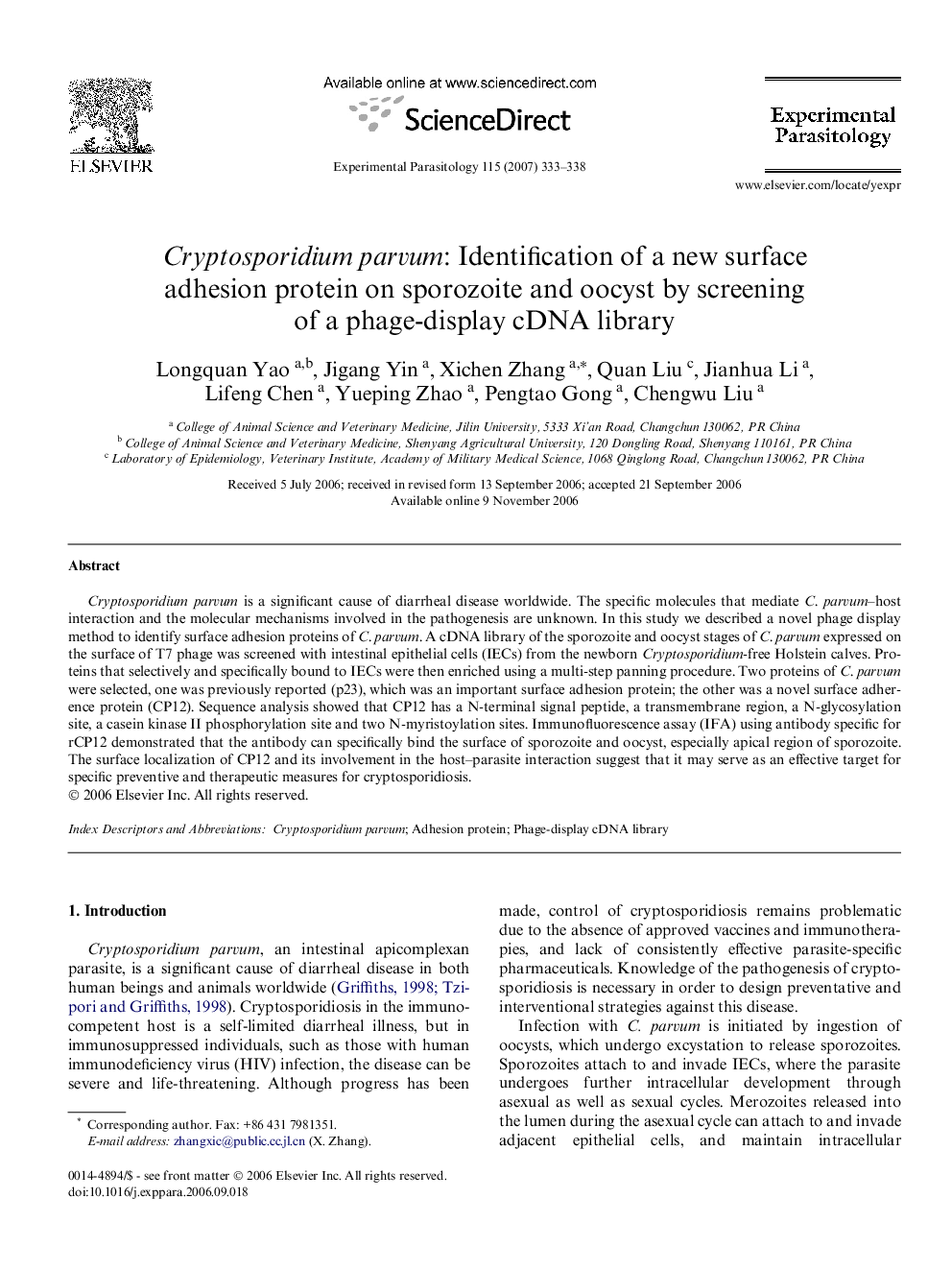| Article ID | Journal | Published Year | Pages | File Type |
|---|---|---|---|---|
| 4371752 | Experimental Parasitology | 2007 | 6 Pages |
Cryptosporidium parvum is a significant cause of diarrheal disease worldwide. The specific molecules that mediate C. parvum–host interaction and the molecular mechanisms involved in the pathogenesis are unknown. In this study we described a novel phage display method to identify surface adhesion proteins of C. parvum. A cDNA library of the sporozoite and oocyst stages of C. parvum expressed on the surface of T7 phage was screened with intestinal epithelial cells (IECs) from the newborn Cryptosporidium-free Holstein calves. Proteins that selectively and specifically bound to IECs were then enriched using a multi-step panning procedure. Two proteins of C. parvum were selected, one was previously reported (p23), which was an important surface adhesion protein; the other was a novel surface adherence protein (CP12). Sequence analysis showed that CP12 has a N-terminal signal peptide, a transmembrane region, a N-glycosylation site, a casein kinase II phosphorylation site and two N-myristoylation sites. Immunofluorescence assay (IFA) using antibody specific for rCP12 demonstrated that the antibody can specifically bind the surface of sporozoite and oocyst, especially apical region of sporozoite. The surface localization of CP12 and its involvement in the host–parasite interaction suggest that it may serve as an effective target for specific preventive and therapeutic measures for cryptosporidiosis.
